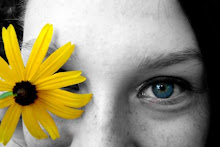Time is standing still in a place of many untold horrors.
I recieved a phone call on Sunday night asking if I wanted to Central State Hospital and photograph. I nearly jumped through the phone. This is a place that I have wanted to get in for a very long time and a place that you just can't walk in and take pictures. The entire grounds are laced with a maze of underground tunnels and abandoned buildings.
Established 1885, main historic buildings long since demolished.
While the Indiana legislature had authorized the establishment of a "hospital for the insane" as early as 1827, the doors of the Indiana Hospital for the Insane (later re-named Central State Hospital) did not open until November, 1848. At this time, the hospital (called the Central Indiana Hospital for the Insane after 1889 and then called Central State Hospital after 1926) opened with five patients and a single building, and by 1928, physicians cared for nearly 3,000 patients. At that time, the hospital consisted of one brick building situated on a large parcel of land, numbering over 100 acres, in the outskirts of Indianapolis (on Washington Street, west of downtown).
From 1848-1948, the hospital grew yearly until it encompassed two massive ornate buildings for the male and female patients, a pathological department, a "sick" hospital for the treatment of physical ailments, a farm colony where patients engaged in "occupational therapy", a chapel, an amusement hall complete with an auditorium, billiards, and bowling alleys, a bakery, a fire house, a cannery manned by patients, and idyllic gardens and fountains.
The more ornate of the two massive ornate buildings came to be known as "the Seven Steeples". This building was designed on the Kirkbride plan of state hospital design.
For a half-century, this complex array of buildings and gardens beckoned to all of the state's mentally ill. By 1905, however, mental health institutions elsewhere in Indiana, built in Evansville, Logansport, Madison, and Richmond relieved an overcrowded Central State Hospital of some of its patient load, leaving it to treat only those from the "central district", an area of 38 counties situated in the middle portion of the state.
By the late 1970s, most of the hospital's ostentatious, Victorian-era buildings were declared unsound and razed. In their place, the state constructed brick buildings of a nondescript, institutional genre. These modern buildings and the medical staff therein continued to serve the state's mentally ill, until allegations of patient abuse and funding troubles sparked an effort to forge new alternatives to institutionalization which, in turn, led to the hospital's closure in 1994.
The grounds of Central State Hospital still stand, largely vacant as of 1999. In place of the large male and female dormitories demolished in the 1970s is a large lawn. The Pathology Department building is well-preserved and houses the Indiana Medical History Museum
Fortunately, the Indiana State Archives, the Indiana State Library, and the Indiana History of Medicine Museum (housed in one of the hospital's remaining nineteenth-century edifices), are preserving the history of an institution that served, albeit not always well, the mentally ill of Indiana for 146 years.
15 years ago










